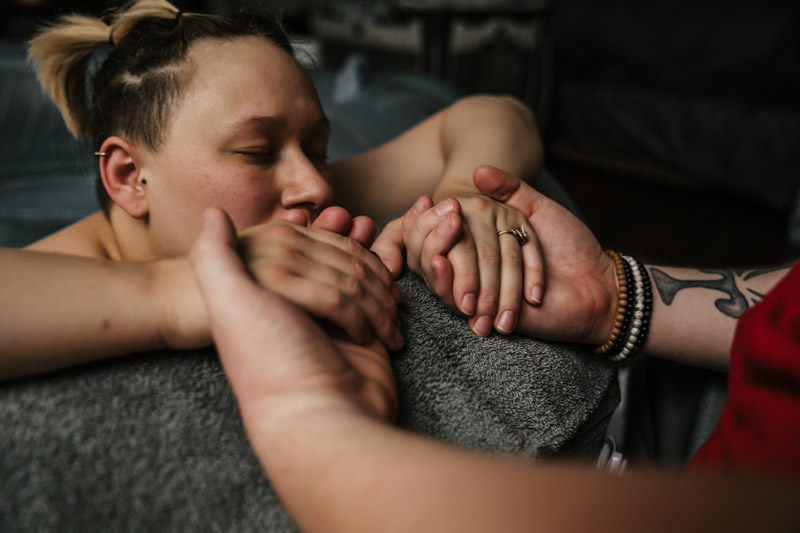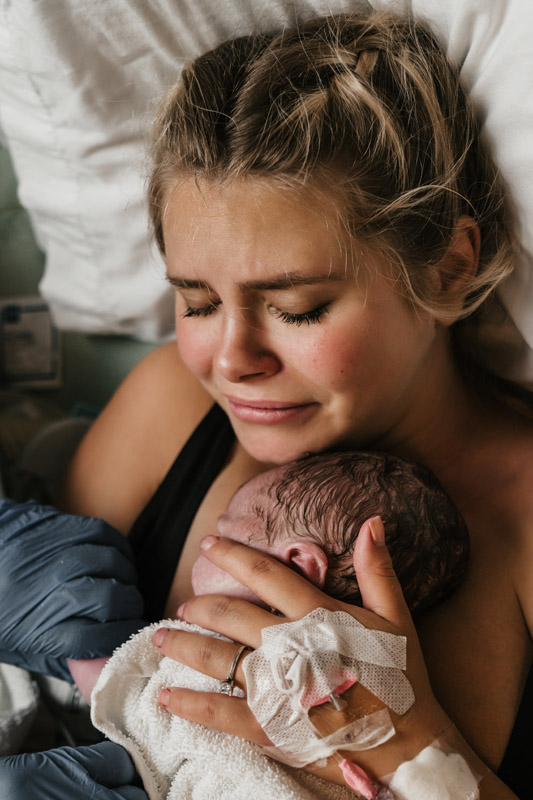Choosing Your Birth Place and Provider
nataliebroders.com > blog >
Natalie Broders
September 29, 2022
Written by:
Can you guess the #1 most impactful choice that you’ll make about your birth? (hint: it’s not what you’ll wear in labor!)
The provider AND the birth location you choose can have THE #1 most profound effect on your birth.
If your OB or Midwife….
- Touches your body without asking consent first, red flag 🚩
- 🟩 Green flag: they ask, “is it okay if I touch?”
- 🟩 Green flag: they ask, “is it okay if I touch?”
- Uses language like, “I’m going to do a cervical exam now”, red flag 🚩
- 🟩 Green flag: they ask, is it okay if I check your cervix? AND they explain how that information will be helpful in your situation, or how it might affect a decision you’re trying to make
- 🟩 Green flag: they ask, is it okay if I check your cervix? AND they explain how that information will be helpful in your situation, or how it might affect a decision you’re trying to make
- Says they “do delay cord clamping” but they really meant 30 seconds (you wanted 5 minutes), red flag 🚩
- 🟩Green flag: they tell you that they will wait until you’re ready to clamp and cut the cord
- 🟩Green flag: they tell you that they will wait until you’re ready to clamp and cut the cord
- Says they will let you “try” for a VBAC (vaginal birth after cesarean), red flag 🚩
- 🟩 Green flag: they use positive encouraging language around VBAC indicating they believe it’s possible and achievable
- 🟩 Green flag: they use positive encouraging language around VBAC indicating they believe it’s possible and achievable
- Doesn’t remember your name or specifics about your pregnancy, red flag 🚩
- 🟩 Green flag: they ask about you and your family and remember specific elements of your birth and pregnancy
- 🟩 Green flag: they ask about you and your family and remember specific elements of your birth and pregnancy
- Doesn’t listen or make you feel heard, red flag 🚩
- 🟩 Green flag: They answer all your questions and take plenty of time with you at each appointment, not making it feel rushed
- 🟩 Green flag: They answer all your questions and take plenty of time with you at each appointment, not making it feel rushed
- Doesn’t value your birth preferences/birth plan, red flag 🚩
- 🟩 Green flag: they take the time to know and understand your unique birth preferences
- 🟩 Green flag: they take the time to know and understand your unique birth preferences
- Present various tests or interventions as non-optional, red flag 🚩
- 🟩 Green flag: they provide you with options for testing and treatment, and illustrate the risks and benefits of every option

If something feels off, listen to that inner voice – you have it for a reason.
Do not assume you can come in during labor with a list of demands and force the on-call Doctor or Midwife into following your wishes.
Instead, listen at your prenatal appointments.
Ask questions.
Find out how they do things.
If they don’t already do things the way you want, perhaps they’re not the right provider for you.
It’s better to find a provider who aligns with you and what you want out of your birth rather than trying to fit a square peg into a round hole.
It’s your right to find a provider you truly connect with and trust deeply.
I’ve created a list of questions that you may want to ask your OB or Midwife at your next appointment. You can pick and choose the ones that you want to ask and draw from this list only what you need.
Questions To Ask When Choosing Your Birth Place and Provider
Below you’ll find questions for a private practice obstetrician, a group practice, home birth midwives, hospital providers, and birth center providers.

Questions for your Doctor or Midwife:
- What are your credentials?
- How long have you been practicing?
- What is your license #?
- you can research the number to see if there are any issues
- Do you work with a partner and do you have adequate backup?
- Who else will be there to assist you at my birth?
- Will you be away any time during my 37-42 week window?
- What is your policy regarding due dates and induction dates?
- What is the induction rate in your practice?
- Out of your last 10 births, how many were induced labors?
- What is your C Section rate out of your last 10 inductions?
- What is your cesarean rate?
- It should be around 5% for out of hospital providers/midwives
- For OBGYNs and Nurse Midwives in the hospital, W.H.O. recommends 10-15% CS rate
- What is your postpartum care schedule?
- Twins: Do you attend births where one or both babies are breech?
- Do you have experience or training with twins?
- Do you have experience or training with breech babies born vaginally?
- Are you familiar with trauma informed care?
- Are you familiar with the language “Pause/Out” during cervical exams?
- Do you support delayed cord clamping?
- How long do you delay cord clamping?
- the correct answer is to wait for white, about 5 minutes, not 30 seconds
- Do you and the hospital support eating and drinking of my own food of choice, during labor, low risk or higher risk?
- What protocols and practices will be discussed and offered at my 36-42 week prenatal visits?
Home Birth & Freestanding Birth Center Specific Questions
- What is your postpartum care schedule?
- the typical schedule for an out of hospital provider is: a visit on day 1-2, then week 2, week 4, and a final 6 week visit.
- If I have postpartum issues, will you come more often?
- the answer should be, “Yes, either myself or my assistant will come as often as needed.”
- What sorts of medical emergencies for mom/baby can you handle?
- What sorts of medical emergencies would you need to transfer to a hospital for?
- What type of emergency equipment and medications do you bring for mom? And baby?
- What are your statistics for transferring to the hospital? (this should be around 10-15%)
Hospital Birth Center
The hospital birth center used to be called the labor and delivery unit. Many hospitals changed the name sometime in the 1980’s to appeal to patients that desired a more natural birth environment and experience as the out of hospital birth movement was growing rapidly. Hospitals always use the medical model of care and practice risk management, even when midwives are providing the care.
Do not be fooled: a hospital birth center is just a hospital. It’s not the same as choosing a freestanding birth center, independent of the hospital.
In the US, your hospital birth may be attended by either a CNM, an obstetrician, or a family practice MD. Nurse midwives are only allowed to attend the low risk births. If you become high risk during the labor and birth process, your care will be taken over by the attending OB. Not all hospitals have midwives on staff. If you are curious about having a midwife attend your hospital birth, inquire with your care team.
Things to Consider When Choosing Your Hospital

Is it a teaching hospital?
Teaching hospitals can be good if you have a high-risk pregnancy and need the latest medical technology. If you give birth in a teaching hospital, you will be seen by resident medical students who are overseen by the attending obstetrician and all final decisions are made after the student gets permission to move forward from the attending OB.
One important thing to know about teaching hospitals is that you will have more bodies in the room observing your birth, which you may or may not be comfortable with.
You may be faced with being evaluated by the student, followed by the attending OB, which means that there may be more face to face time with providers, which can interrupt your labor flow. If this does not sound appealing to you, consider asking for limited student contact in your birth preferences.
Are there midwives on staff? If so, how many, and what shifts are covered by them? Some hospitals have midwives, but they only are on day shifts, or limited times throughout the week.
Is the hospital considered a Mother Friendly Hospital or a Baby Friendly Hospital?
If not, what do they offer similarly?
Will the hospital support you having a vaginal breech birth?
Surprise breech happens, sometimes during pushing!
Do people eat and drink during labor at this hospital?
Check to make sure they support eating and drinking during labor, low risk and high risk. You and the baby need energy, and there is definitive evidence that it is harmful to withhold nourishment.
Portland Birth Photographer
Birth Doula & Videographer
Natalie Broders is a birth photographer, birth videographer and birth doula located in Portland, Oregon. She lives on a farm with her husband and 2 kids. They raise chickens and love to garden. Natalie loves babywearing, cloth diapering and is passionate about her work as an advocate for birthing people as a labor and birth doula. She had one of her babies at a birth center and her second baby was born at home, in water.